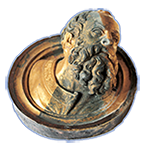Speaker
Description
Varnish on easel painting has two objectives: protect the colored layer from external impact and saturate the colors of the pigments (esthetic role). Varnish is the first layer exposed to light, dust and other deteriorating factors. Thus, easel paintings loose their visual appearance making the observation and appreciation of the details of the artwork difficult. In order to reverse these processes, ancient paintings are periodically restored. The restoration of the pictorial layer is a major transformation, which involves mainly the dissolution and replacement of the varnish that covers the paint layer, and may alter considerably the composition and the cohesion of this composite material. During the 20th century a large number of paintings have been damaged, not through war or natural cataclysms but through restoration operations. There is an urgent need for a deeper understanding of the processes that are employed in restoration operations. We present recent results on the nanoscopic mechanisms for swelling and dissolution of a Laropal A81 varnish film by the transfer of a small amount of solvent applied through an aqueous gel. For this, neutron reflectometry (NR) coupled insitu with rheology was used to investigate directly the behavior of thin films at liquid interfaces with a resolution of a few Å during its swelling, breaking and dissolution. We show a signature for film rupture and dissolution via surface heterogeneity.

